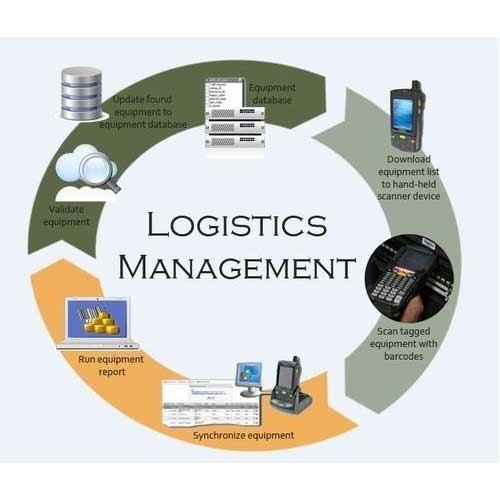
In today’s fast paced business environment, the need for efficient logistics cannot be overstated. Logistics Management Systems (LMS) play a pivotal role in ensuring that goods move smoothly from point of origin to the final destination. Integrating Logistics Management Systems into your business can significantly enhance operational efficiency, reduce costs, and improve customer satisfaction.
Understanding Logistics Management Systems
Logistics Management Systems are software solutions designed to streamline and optimize the various processes involved in logistics and supply chain management. These systems encompass a wide range of functions, including transportation management, warehouse management, inventory control, and order fulfillment. By leveraging Logistics Management Software, businesses can gain better visibility and control over their logistics operations, leading to more informed decision-making and enhanced productivity.
Benefits of Integrating Logistics Management Systems:
1. Enhanced Efficiency and Productivity
One of the primary advantages of integrating Logistics Management Software is the significant improvement in efficiency and productivity. Automation of routine tasks such as order processing, inventory tracking, and shipment scheduling reduces the need for manual intervention, minimizing errors and saving time. This allows employees to focus on more strategic activities, thereby boosting overall productivity.
2. Cost Reduction
Logistics Management Systems help businesses reduce costs in several ways. Optimized route planning and real time tracking capabilities enable more efficient use of transportation resources, lowering fuel consumption and reducing transportation costs. Additionally, better inventory management reduces the risk of overstocking or stockouts, which can lead to significant cost savings.
3. Improved Customer Satisfaction
In the age of e-commerce and fast deliveries, customer expectations are higher than ever. Logistics Management Software enhances order accuracy and provides real-time tracking information, ensuring that customers receive their orders on time and in perfect condition. This leads to higher customer satisfaction and increased loyalty, which are crucial for business growth.
4. Greater Visibility and Control
Logistics Management Systems offer comprehensive visibility into the entire supply chain, from procurement to delivery. This transparency enables businesses to monitor and manage their operations more effectively. Real-time data and analytics provide insights into performance metrics, allowing businesses to identify areas for improvement and make data-driven decisions.
Key Features of Effective Logistics Management Software:
To fully realize the benefits of Logistics Management Systems, it is essential to choose software that aligns with your business needs. Here are some key features to look for:
1. Transportation Management
Effective Logistics Management Software should offer robust transportation management capabilities, including route optimization, carrier selection, and freight auditing. These features help streamline the transportation process, reduce costs, and ensure timely deliveries.
2. Warehouse Management
Warehouse management is a critical component of logistics. Look for software that provides efficient warehouse management functionalities such as inventory tracking, order picking, and warehouse layout optimization. This will help improve warehouse operations and reduce handling times.
3. Inventory Management
Accurate inventory management is crucial for meeting customer demand and minimizing holding costs. The software should offer real-time inventory tracking, demand forecasting, and automated replenishment to ensure optimal inventory levels at all times.
4. Order Fulfillment
Seamless order fulfillment is key to customer satisfaction. Logistics Management Systems should facilitate efficient order processing, from order entry to delivery. Features like automated order processing, real-time order tracking, and integration with e-commerce platforms can enhance the order fulfillment process.
Steps to Integrate Logistics Management Systems into Your Business:
1. Assess Your Needs
Start by evaluating your current logistics processes and identifying areas that need improvement. Determine the specific functionalities you require in a Logistics Management System to address these needs.
2. Choose the Right Software
Research and compare different Logistics Management Software options based on your requirements. Consider factors such as scalability, ease of use, integration capabilities, and cost. Select a solution that best fits your business needs.
3. Plan the Implementation
Develop a detailed implementation plan that includes timelines, resource allocation, and training requirements. Ensure that all stakeholders are on board and understand the benefits of the new system.
4. Train Your Team
Proper training is essential for the successful adoption of new software. Provide comprehensive training to your staff to ensure they are comfortable using the new system and can leverage its full potential.
5. Monitor and Optimize
After implementation, continuously monitor the performance of the Logistics Management System. Collect feedback from users and make necessary adjustments to optimize its effectiveness.
Conclusion:
Integrating Logistics Management Systems into your business is a strategic move that can drive significant improvements in efficiency, cost savings, and customer satisfaction. By selecting the right Logistics Management Software and following a structured implementation plan, businesses can streamline their logistics operations and gain a competitive edge in the market. Embracing this technology is not just an option but a necessity for businesses aiming to thrive in today’s dynamic and demanding environment.







